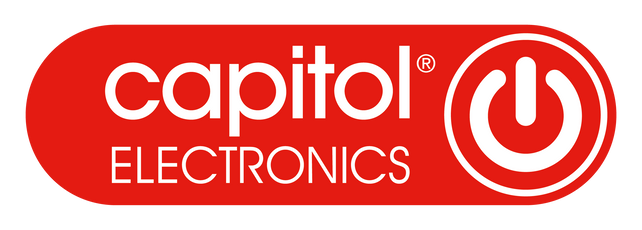info@capitolessentials.com

How Charging Banks Work: A Beginner’s Guide
Introduction to Charging Banks
With the increasing reliance on smartphones, tablets, and wireless gadgets, charging banks have become indispensable. But how do these compact devices actually work? If you’ve ever wondered about the inner workings of a portable charger, this guide is designed to explain everything in simple terms.
Charging banks—also known as power banks—store electrical energy and deliver it to your device when needed. They are a convenient energy reservoir, allowing you to recharge your gadgets on the go.
Why Charging Banks Are Essential Today
Mobile Dependency and Portability
We're more connected than ever, and our mobile devices are our lifelines. Whether it's for communication, navigation, or streaming, running out of battery can be more than an inconvenience—it can disrupt your day.
Charging banks solve this by offering power anytime, anywhere. Their portability makes them ideal for travellers, commuters, and anyone constantly on the move.
Emergency Backup Power
In emergencies, a charged power bank can be a lifeline. Whether it’s a power outage, a remote hike, or an airport delay, having access to backup power provides peace of mind and a crucial safety net.
Components of a Charging Bank
Understanding how a charging bank functions begins with its core components:
Battery Cell
Most charging banks use lithium-ion or lithium-polymer cells. These cells are responsible for storing energy. The quality of the cell often determines the bank’s capacity and lifespan.
Circuit Board and Controllers
The internal circuit board regulates the flow of electricity, protecting your device from overcharging, short circuits, and overheating. This part also manages voltage conversion.
Input/Output Ports
-
Input port: Used to charge the power bank itself.
-
Output port: Used to charge your device.
Many modern power banks also include USB-C or multiple USB ports for versatile charging.
How Charging Banks Store Energy
Power banks store energy much like a rechargeable battery. When plugged into a wall outlet or computer, electrical energy is transferred to the internal battery cells. The input circuit converts high-voltage AC to suitable DC voltage that can be stored safely.
Once charged, the energy remains stored until needed. Battery management systems (BMS) prevent overcharging, overheating, or voltage irregularities during this process.
How Charging Banks Deliver Energy
When you connect your device to the charging bank, it begins releasing stored energy through the output port. A voltage boost converter elevates the battery’s voltage (usually 3.7V) to the necessary output level (typically 5V or more). Intelligent chips may adjust the power flow depending on your device’s needs, ensuring optimal charging.
Types of Charging Banks
Standard Power Banks
These are the most common types, featuring one or more USB ports. They come in various capacities—from slim, pocket-sized models to large, high-capacity units.
Solar Charging Banks
Ideal for outdoor enthusiasts, these models include solar panels to top up the battery using sunlight. While slow to charge via solar alone, they offer emergency options off the grid.
Wireless Power Banks
These utilise Qi wireless technology to charge compatible devices without cables. They still feature traditional ports for universal compatibility.
Understanding Charging Capacity
Charging capacity is measured in milliamp-hours (mAh). A higher mAh means more stored energy and the ability to charge devices multiple times. For example, a 10,000mAh power bank can typically charge a standard smartphone 2–3 times, depending on battery size and efficiency.
Here's a basic comparison table:
| Power Bank Capacity | Estimated Smartphone Charges |
|---|---|
| 5,000mAh | 1–1.5 times |
| 10,000mAh | 2–3 times |
| 20,000mAh | 4–6 times |
Charging Speed and Output Ratings
Watts, Amperes, and Volts Explained
Charging speed is dictated by three factors:
-
Voltage (V) – Pressure of electricity.
-
Amperage (A) – Flow rate of electricity.
-
Wattage (W) – Total power (V × A).
More watts generally mean faster charging.
Fast Charging vs Regular Charging
Fast-charging power banks support higher output—often 18W or more—compared to regular 5W outputs. Technologies like Quick Charge or USB-PD enable this rapid energy transfer, but your device must also support it.
Safety Features in Modern Charging Banks
Most modern charging banks include built-in safety features such as:
-
Overcharge protection
-
Short circuit prevention
-
Temperature control
-
Surge protection
These ensure that both the power bank and your devices remain safe during use.
Charging Bank Lifespan and Maintenance
With proper care, a good-quality charging bank can last 3–5 years. Key tips include:
-
Avoid full discharges frequently.
-
Store in cool, dry places.
-
Don’t leave it charging overnight habitually.
How to Choose the Right Charging Bank
Based on Device Type
-
Smartphones: 10,000–15,000mAh is ideal.
-
Laptops/Tablets: Look for 20,000mAh+ with USB-C PD support.
Based on Usage Frequency
-
Occasional use: Lightweight models.
-
Daily commuters: Mid-range with fast charging.
-
Travelers: High-capacity, multi-port versions.
Common Misconceptions about Charging Banks
-
Myth: More mAh means faster charging.
-
Fact: Speed depends on wattage, not just capacity.
-
-
Myth: Wireless charging is always better.
-
Fact: It's more convenient, but typically slower than wired.
-
Troubleshooting Charging Bank Issues
| Problem | Solution |
|---|---|
| Not charging device | Check cables and ports |
| Power bank not charging | Try a different wall adapter |
| Overheating | Avoid charging in hot environments |
| Inconsistent output | Reset the power bank if possible |
FAQs
Q1: Can a power bank charge multiple devices at once?
Yes, if it has multiple output ports and sufficient power, you can charge multiple gadgets simultaneously.
Q2: How long does it take to charge a power bank fully?
Depends on capacity and input type. A 10,000mAh bank may take 4–6 hours with standard input, faster with USB-C PD.
Q3: Do power banks lose charge over time?
Yes, lithium batteries slowly self-discharge, so recharge every 1–2 months if unused.
Q4: Is it safe to leave a device charging overnight on a power bank?
While safe due to built-in protections, it’s not recommended habitually, as it may reduce battery longevity.
Q5: What does mAh mean?
It stands for milliamp-hours and indicates how much charge the power bank can hold.
Q6: Are solar power banks practical for daily use?
They're better as emergency solutions. Solar panels charge slowly compared to wall charging.
Conclusion
Charging banks are a modern marvel, blending convenience and utility into a compact solution for our tech-heavy lives. Understanding how they work helps you use them more effectively and make smarter purchasing decisions. From capacity to safety features, every element plays a role in ensuring you're never caught with a dead device again.
Our Top Picks of Charging Banks
Fast Charge 22.5W USB 10,000 mAh Power Bank (C1840)
Shop our full range of Power Banks here.


